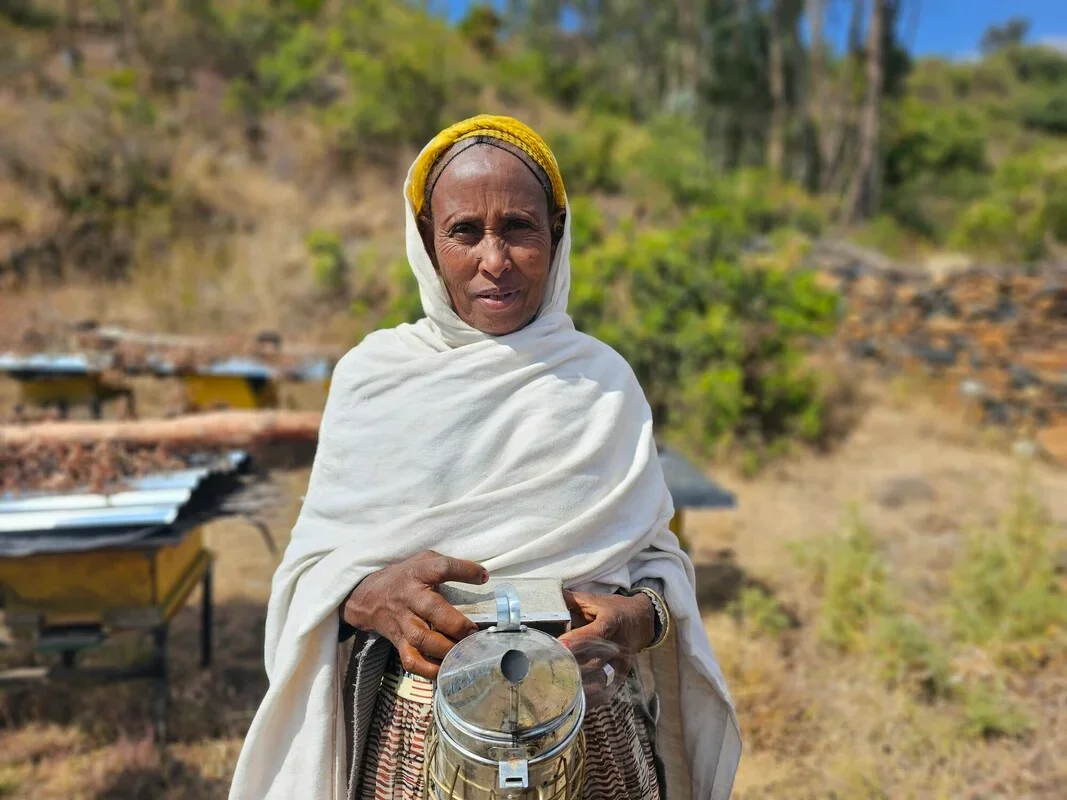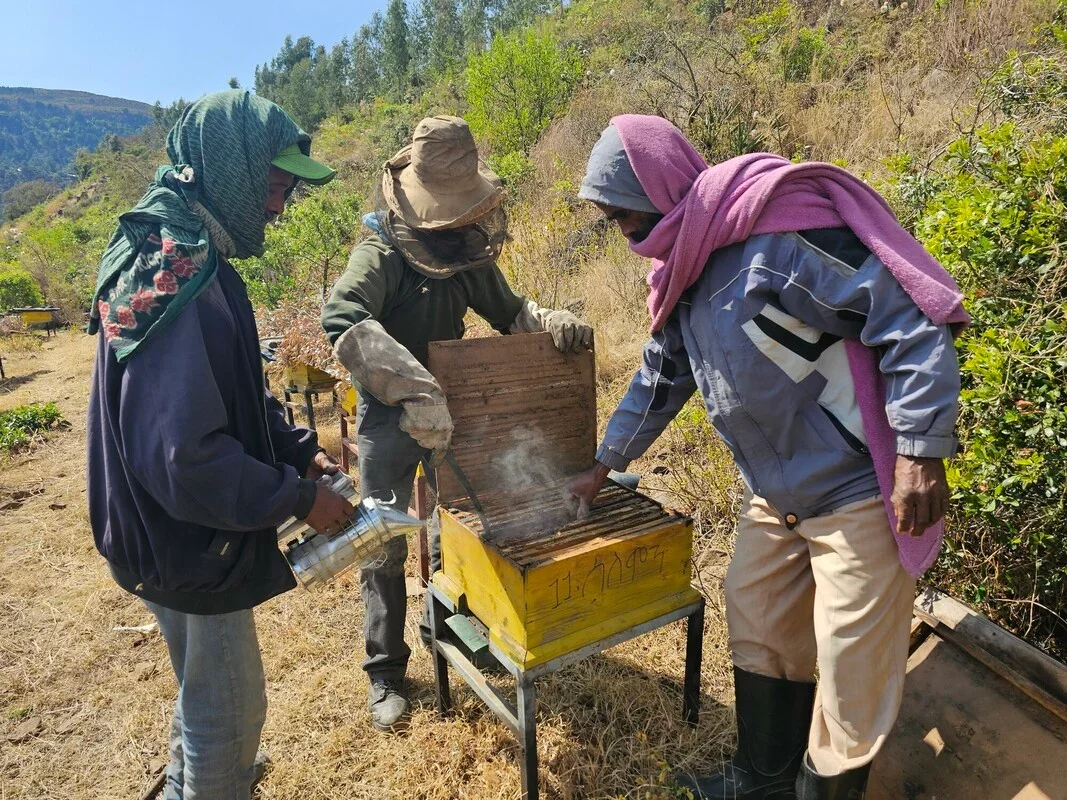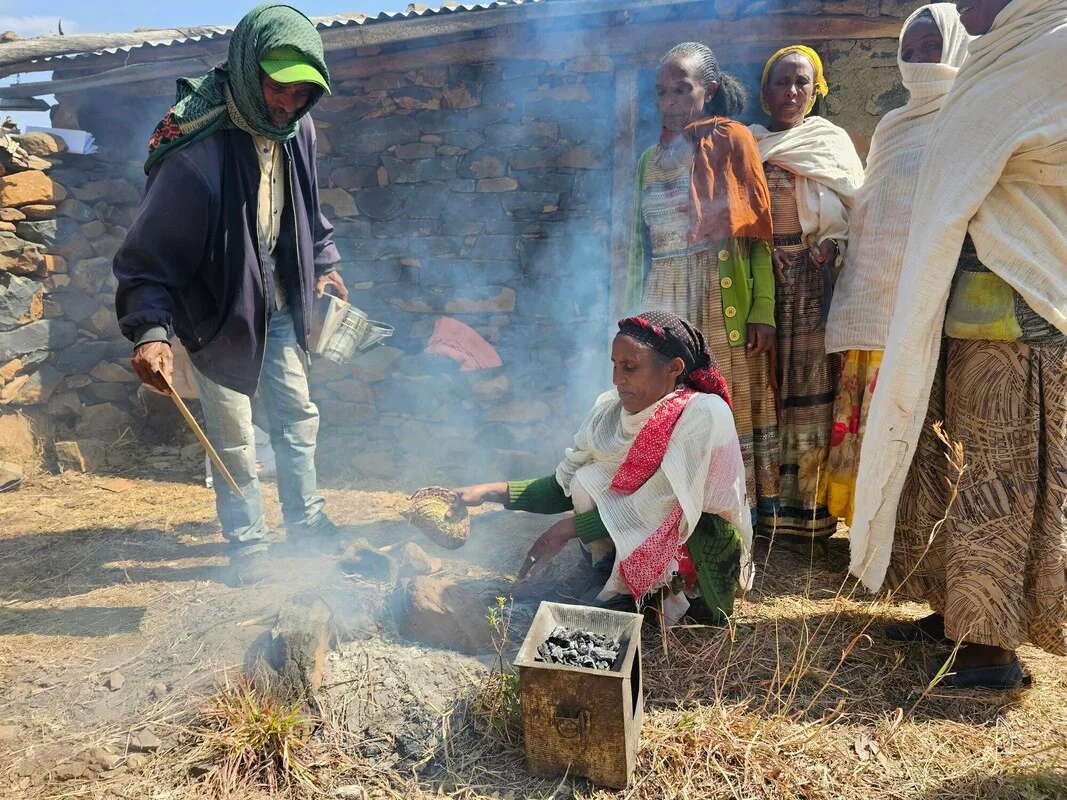120,000 bees
The 55-year-old is part of a bee cooperative supported by CARE and a partner organization in the SELAM project. The twenty group members come together to take care of bee colonies to produce enough honey to sell on the market and with this generate income for their families.
CARE supported the start of the cooperative with 120,000 bees, 40 beehives, and 57 lbs (26kg) of wax.
The bee cooperative was founded several years ago, and it was thriving.
“All my hope was with the bees,” says Gebregergis, 51, father of eight who is also a member of the cooperative. “I do not have land or any other source of income. But with the money we got from selling the honey twice a year, I had a good life. I even bought schoolbooks, pens, shoes, and food for my children.”
Then came the conflict in Tigray which lasted for two years and ended only in November 2022, affected an estimated seven million people. The conflict led to numerous casualties, mass displacements, food insecurity, and damage to infrastructure.
Likewise, the beehives were burned down, the bees died, and the cooperative collapsed.





